Figma Software Engineer Interview Process - An In-Depth Guide
Ace your Figma Software Engineer interview with our detailed guide, outlining each step of the process.
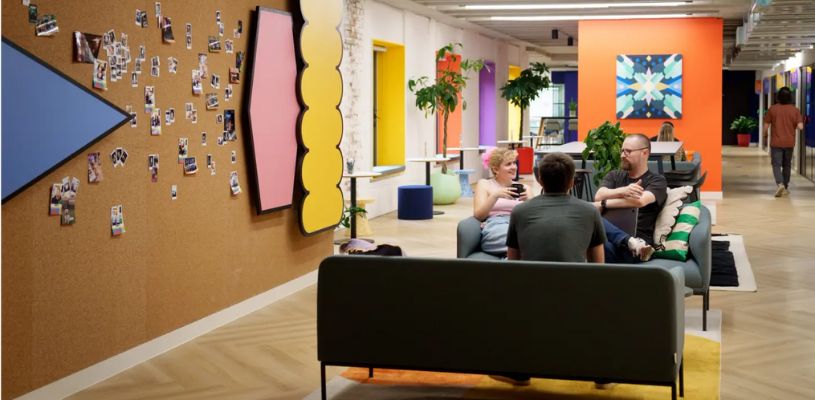
Figma, a well-known company in the software engineering world, has helped thousands of developers and teams design and build applications. As such, many software engineers are keen to join the Figma team.
Today at 4 Day Week, we’ll be offering some insight into the Figma interview process and what it takes to get hired.
So, let’s dive in.
Figma Software Engineer Hiring Process Overview
Figma has transformed the design landscape and has become the go-to platform for collaboratively creating UIs and prototypes.
The company’s hiring process for software engineers consists of several steps, starting with an application and continuing through phone screenings, technical evaluations, on-site interviews, reference checks—and, if all goes well, a job offer.
Figma's goal is to evaluate how well you meet the job requirements and technical skill requirements, as well as how well your attitude, work style, and personality align with the company's culture.
Here’s What Interviewees Say
According to Glassdoor, most Figma interviewees report a positive experience (67%) with slightly above-average difficulty. However, some interviewees point out challenges and preferential treatment within the interview process, while others mention being asked unclear technical questions.
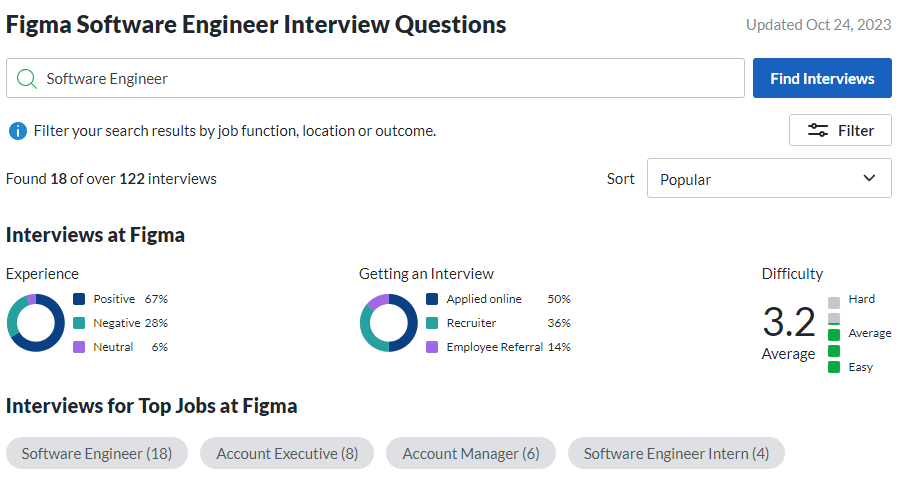
Here are some noteworthy excerpts:
- “First round was a recruiter call. The recruiter was really nice and explained the next steps. The next round was a 1-hour technical screen. The question focuses on a real-world use case they encounter at Figma. I had never seen a problem like this before, and I felt like it wasn't explained very well. I had a lot of questions… Apparently, I asked too many questions though because I got a rejection email the next day.”
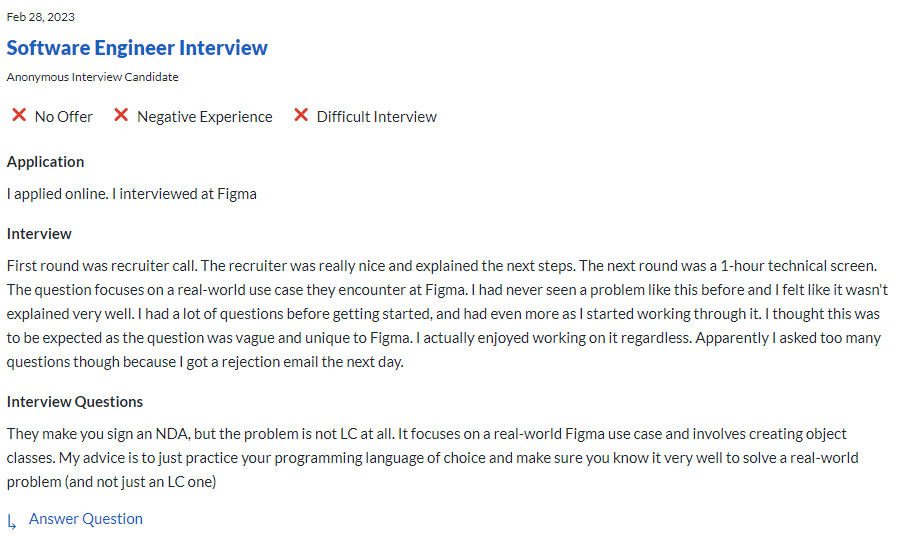
- “TLDR: They say they try to uplift candidates during the interviews, but if you’re not from FAANG, they will go out of their way to find any little reasons possible to make you fail.”
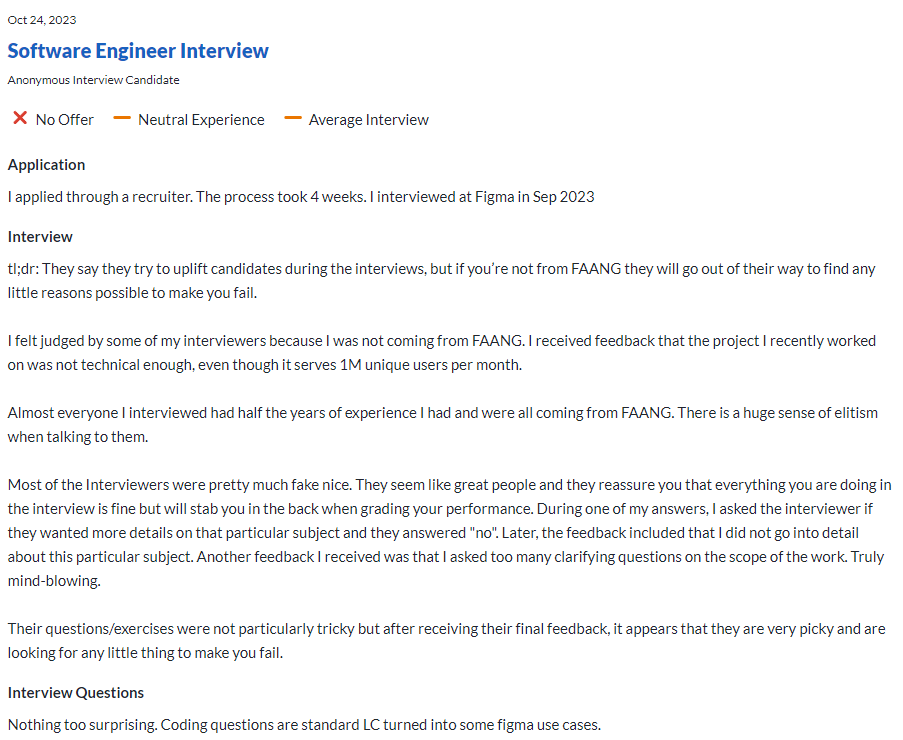
- “Code question in a tech screen. It was relevant to actual work, and the interviewers were helpful and friendly. Worked through the question, and they had some additional thought-provoking follow-up questions.”
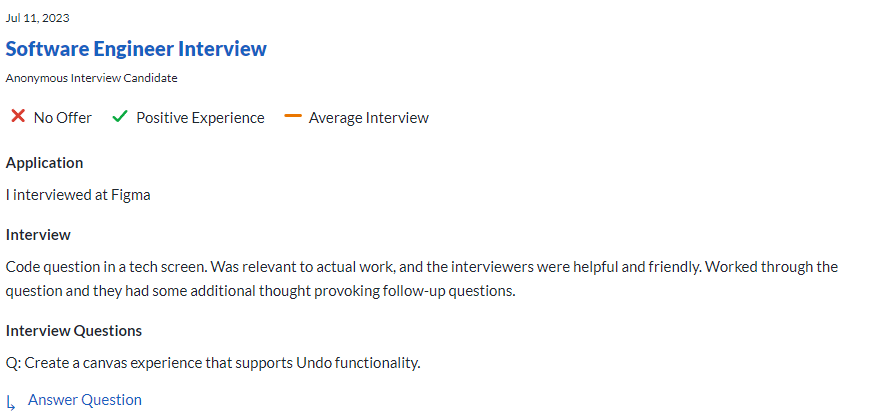
Figma Software Engineer Hiring Process Timeline
Figma’s hiring process takes an average of 24.5 days from application to decision. Most of this time is taken up by interview rounds (more on those in a minute) with varying durations.
The interview rounds vary in length for each position, but typically include:
1. Recruiter Screen: 20–30 minutes
2. Technical Assessment: 45–60 minutes
3. Hiring Manager Interview: 30–60 minutes
4. Onsite Interviews: 4–5 × 30–90 minutes
After successfully moving through these interview rounds, there’s also a reference check. After that, you’ll receive your decision—hopefully a job offer!—in roughly 5 days.
Now, let’s learn a bit more about each of the interview stages.
Figma Software Engineer Interview Stages
Embarking on the interview process for a Software Engineer at Figma involves multiple stages, each designed to assess both technical prowess and creative problem-solving skills.
Let's unpack each stage to ensure you're fully prepared for what lies ahead.
Stage 1: Recruiter Screen
The process kicks off with a phone screen led by a recruiter. This fairly casual conversation usually covers your professional background and experience, as well as the general reason you’re interested in Figma.
Recruiters want to ensure you have the basic qualifications for the role and that your communication skills will be sufficient.
Would you like a 4 day work week?
Stage 2: Technical Assessment
Candidates for software engineer roles will have to undergo a technical assessment, including coding challenges tailored to the job requirements.
These coding challenges may include:
- Creating hash tables
- Implementing a linked list or stack
- Solving the knapsack problem
Stage 3: Hiring Manager Interview
This is a discussion with a hiring manager (often the manager you’ll work under if hired) that delves into past projects, technical skills, and career aspirations. They’ll also gauge your alignment with Figma's culture.
Stage 4: Onsite Interview Rounds
Multiple interview rounds follow, involving managers, team leads, and others.
The actual interviews may vary, but lots of applicants report five in total:
- Values Assessment: A discussion with a hiring manager about how well you understand Figma’s values, culture, mission, and vision.
- Technical Exploration Interview: A discussion with an engineer about your technical background and experience (i.e., tooling, programming languages, and design software).
- System Design Evaluation: A discussion with a manager to assess your problem-solving skills and your ability to break them down into simpler components.
- Coding Session: A conventional coding interview where you'll tackle coding challenges on a whiteboard or coding platform.
- Coding Session 2: Another coding interview that emphasizes a different set of skills or technologies, focusing more on handling edge cases and ‘worst-case’ scenarios for data structure implementation.
Stage 5: Job Offer
Successful candidates receive a job offer if they navigate through all stages effectively. Job offers provided by Figma to their software engineers may have varying salaries, depending on your seniority.
How to Ace Figma's Software Engineer Interview Process?
Here are some tips to ace Figma’s interview process:
- Preparation: Research Figma's design principles, tools, and workflow. Familiarize yourself with common interview questions and answers to anticipate what may come your way.
- Technical Skills: Given Figma's design focus, showcase a solid grasp of design concepts, user experience, and interface design. Discuss your proficiency in design tools like Figma, Sketch, or Adobe XD.
- Collaboration and Communication: Highlight your experience in collaborative team settings. Explain how you effectively communicate with team members, aligning with Figma's collaborative approach.
- Problem-solving and Critical Thinking: Expect technical assessments and design challenges. Demonstrate your problem-solving and critical thinking skills by analyzing and presenting well-reasoned solutions to design problems.
- Portfolio and Projects: Build a portfolio showcasing your design projects. Discuss your ability to create user-centered designs, collaborate with teams, and navigate challenges in the design process.
- Behavioral and Cultural Fit: Emphasize your positive and supportive work style. Discuss experiences of working with others, handling feedback, and adapting to changes in a team environment.
- Practice: Rehearse responses to common interview questions and polish your portfolio presentation.
- Stay Informed: Stay updated on the latest design trends and tools. Demonstrate your commitment to staying current in the dynamic design industry.
By concentrating on these elements and practicing, you'll be well-prepared to tackle the Figma interview process, boosting your chances of success.
20 Figma Interview Questions
Before we finish up, here’s a selection of interview questions applicants have faced in Figma interviews. Use these to familiarize yourself with answering questions related to your experience and the Figma platform.
General Figma and UI/UX Questions
- What is your favorite Figma feature and why?
- What are some of the challenges of designing user interfaces (UIs) for a collaborative design platform like Figma?
- How do you stay up-to-date with the latest trends in UI/UX design?
- What is your experience with accessibility design?
- What is your process for designing and prototyping user interfaces?
Technical Questions
- Explain the concept of a component in Figma and how you would use components to build a complex design.
- How would you debug a performance issue in a Figma plugin?
- Describe your experience with using Figma's API to build custom tools or integrations.
- What are some of the challenges of working with Figma's codebase?
- How do you approach performance optimization for Figma plugins?
Problem-Solving Questions
- You are designing a new feature for Figma that allows users to create custom animations. How would you approach this design challenge?
- You are working on a Figma plugin that's experiencing stability issues. How would you identify the root cause of the problem?
- You are designing a new UI for a complex application. How would you make sure that the UI is easy to use and understand for all users?
- You are working on a Figma plugin that needs to be compatible with multiple browsers. How would you approach this compatibility testing challenge?
- You are designing a new feature for Figma that requires significant changes to the codebase. How would you ensure that these changes are implemented in a way that’s easy to maintain?
Behavioral Questions
- Tell me about a time when you had to overcome a technical challenge in a software engineering project.
- Describe a situation where you had to work with a team to achieve a common goal.
- How do you handle criticism or feedback from others?
- What is your approach to learning new technologies?
- What are your career goals for the next 5 years?
Wrapping Up
When it comes to the Figma software engineer interview process, you need a well-thought-out strategy. From tackling tough technical assessments to showing off your collaboration skills, you've got to prove your design and problem-solving expertise.
Ready to explore job opportunities that offer a better work-life balance?
At 4 Day Week, we connect candidates with 4-day workweek opportunities at companies that care about their employees' well-being. Discover these job opportunities today and embrace a flexible working arrangement that aligns with your career aspirations.